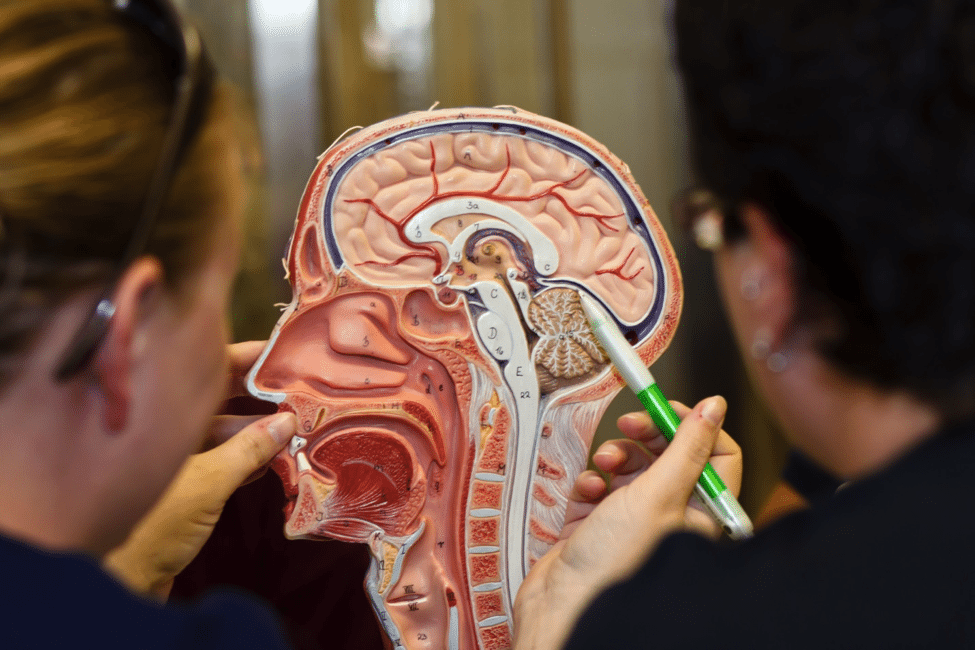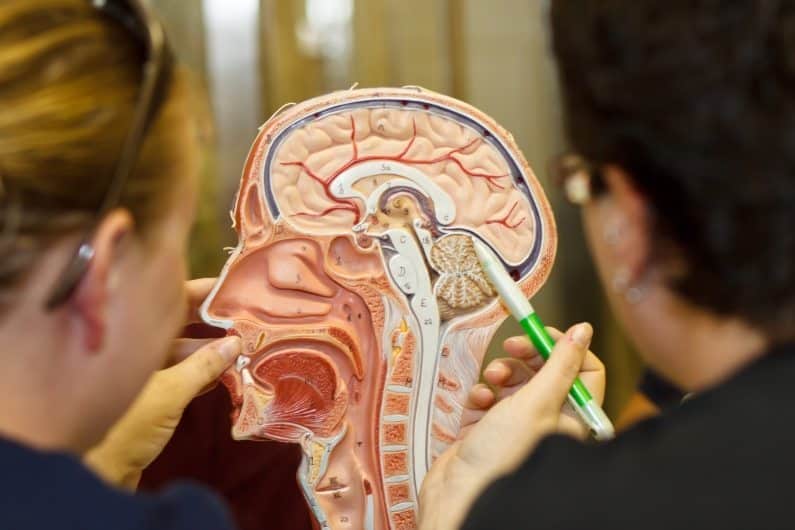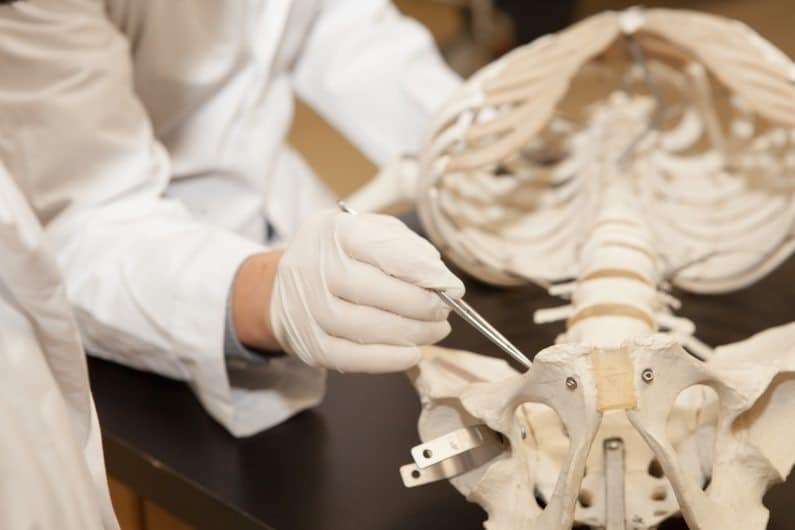[et_pb_section bb_built=”1″ admin_label=”section”][et_pb_row admin_label=”row” background_position=”top_left” background_repeat=”repeat” background_size=”initial”][et_pb_column type=”4_4″][et_pb_text admin_label=”Title” _builder_version=”3.0.49″ background_layout=”light” text_orientation=”center” border_style=”solid” module_alignment=”center”]
Intro to the Nervous System Before Pursuing a Chiropractic Degree
[/et_pb_text][et_pb_text _builder_version=”3.0.99″ background_layout=”light”]
The purpose of chiropractic care is to help remove interference from the nervous system so the body can perform optimally. As the nervous system controls and coordinates every function of the human body (as it does with other animals), a comprehensive understanding of how it works is an essential component of chiropractic training.
The nervous system is a complex network of nerves and cells that transmit signals from the brain and spinal cord to different parts of the body. Chiropractors examine the body as a whole while assessing nervous system function and potential compromises, or subluxations, in the spine. Students pursuing a chiropractic degree develop a thorough knowledge of human anatomy and neuroanatomy in extensive lecture and laboratory courses, in addition to hands-on courses in chiropractic adjusting techniques.
Here is a helpful introduction to how the nervous system works.
Central Nervous System‘s Role in Chiropractic Science
In vertebrate species, the nervous system consists of the central nervous system (CNS) and the peripheral nervous system (PNS). The major parts of the CNS are the brain and spinal cord, the body’s control center where sensory information is received, processed and acted upon. There are approximately 100 billion neurons in the brain’s gray matter, controlling both higher mental functions (consciousness, memory, voluntary actions) and lower body functions (respiration, digestion, heart rate, etc).
The spinal cord is a long, thin and tubular mass of bundled neurons extending from the brain, comprised of 31 segments, each containing a pair of spinal nerves. Students of chiropractic science understand that these are some of our most important peripheral nerves, acting as on- and off-ramps from the spinal cord to relay nerve impulses throughout the body and integrating reflexes to stimuli.
Peripheral Nervous System in Chiropractic Science
The smallest units in the nervous system are neurons, which are specialized cells that send signals in the form of electrochemical impulses rapidly and precisely to other cells. Long fibers called axons in the peripheral nervous system can form neural circuits and networks that inform our behavior and perception of the world. The PNS consists of somatic nerves that mediate voluntary movement, and the autonomic nervous system, which functions without conscious effort.
Nerves in the somatic system connect the brain and spinal cord with muscles and the skin’s sensory receptors. The autonomic system is further subdivided into the sympathetic, parasympathetic and enteric systems. The sympathetic division responds to stress, emotion, and exercise with changes in respiration, heart rate, stress hormones, and digestion. The parasympathetic works to return these functions to equilibrium when the body is at rest. The enteric nervous system works mostly independently to regulate digestion and function of the digestive organs.
Applying Knowledge of the Nervous System
Correcting and improving the nervous system’s function through regular chiropractic care has been shown to improve function, but more than that, because all body function is controlled by the nervous system, adjustments made throughout your chiropractic career can result in better overall health and wellness. This is because all of the body’s organs, systems, muscles and other tissues require proper nerve flow for them to function as intended. Subluxations in the spine inhibit the central nervous system’s ability to transmit signals to affected areas, which can create imbalances and functional problems elsewhere in the body. Chiropractic adjustments help correct subluxations so the body can function at its best.
Discover why Sherman College of Chiropractic gives students a distinct advantage in pursuing a chiropractic degree!
[/et_pb_text][/et_pb_column][/et_pb_row][/et_pb_section]









